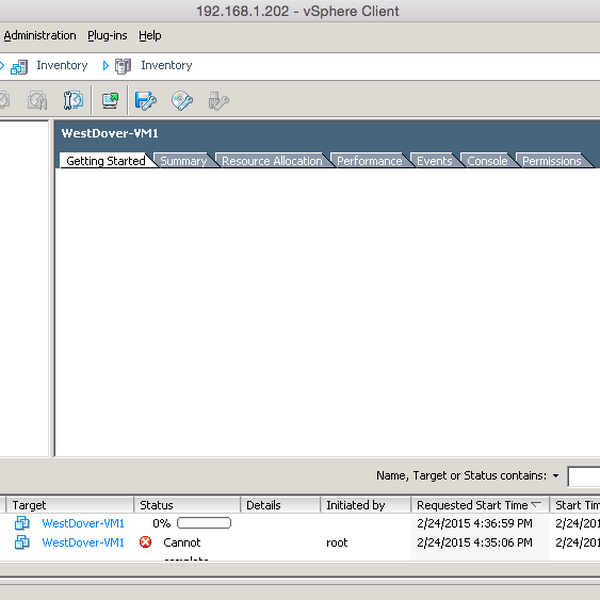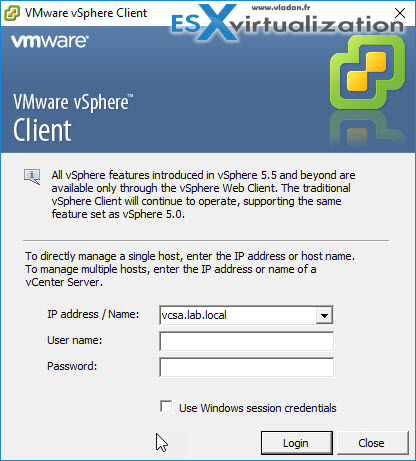Installing the vSphere Client. Install the vSphere Client on a Windows system to connect to and manage single ESXi hosts. To connect to and manage vCenter Server systems and the hosts connected to them, use the vSphere Web Client instead of the vSphere Client. Using the vSphere Web Client allows you to access a greater range of vSphere features. VMware vSphere Client Download September 26, 2013 March 2, 2016 VMware So VMware hasn’t exactly made it easy to locate the vSphere client download and given the clients importance in managing your VMware environment I’ve compiled a list of the direct download links for both old and new vSphere clients.

Today VMware made vSphere 6.7 bits available for everyone to download. VMware vSphere 6.7 is now GA.
VMware vSphere 6.7 Release Notes and Download Links
Vsphere Client Download Url
- VMware vCenter Server 6.7 [Release Notes][Download]
- VMware vSphere Hypervisor (ESXi) 6.7 [Release Notes][Download]
- VMware vSphere Replication 8.1 [Release Notes][Download]
- VMware Guest SDK 10.2.0 [Download]
- VMware Virtual SAN Witness Appliance 6.7 [Download]
- VMware vRealize Orchestrator Plug-In for vSphere Replication 8.1 [Release Notes][Download]
- VMware vSphere Client SDK 6.7 [Download]
- VMware vSphere Command Line Interface 6.7 [Download]
- VMware vSphere Management SDK 6.7 [Download]
- VMware vSphere Perl SDK 6.7 [Download]
- VMware vSphere SNMP MIBs 6.7 [Download]
- VMware vSphere Virtual Disk Development Kit 6.7.0 [Download]
- VMware vSphere Web Client SDK 6.7 [Download]
Since vSphere 6.0 VMware started to extend their major release cycles. With 518 days, the development time of vSphere 6.7 was 3 months shorter than the previous version but is still much longer than the release cycles in the vSphere 5 era. Let's hope for smooth upgrades in the next couple of weeks.
ESXRelease DateDays since
prior release6.72018-04-175186.52016-11-156146.02015-03-125365.52013-09-223765.12012-09-113845.02011-08-244074.12010-07-134184.02009-05-214563.52008-02-206153.02006-06-155632.52004-11-292442.12004-03-302532.02003-07-214341.52002-05-134161.02001-03-23
VMware ESX History Diagram
Share:
Related posts:


- VMware vSphere 6.5 Download Links Available
- VMware vSAN 6.6 GA - Download Links Available
- What's inside VMware vSphere 6.0 Update 3
- VMware vSphere 6.0 Download Available
- vSphere 5.1 Download - Public Available!
2 thoughts on “VMware vSphere 6.7 Download Links Available”
TamilselvanGood to know the release history and timelines.
Could you share comparisons over 6.0,6.5 and 6.7
Thanks much on sharing your valuable knowledge.
Before you can manage vSphere Auto Deploy with rules that you create with PowerCLI cmdlets, you must install PowerCLI.
- Select a version of PowerCLI compatible with your version of ESXi by using the VMware Product Interoperability Matrix .
- Check system requirements for the version of PowerCLI that you selected by using the Compatibility Matrix on the PowerCLI home page for the respective PowerCLI version.
- Open PowerShell on your workstation.
Procedure
- Download a version of PowerCLI later than PowerCLI 6.5R1 from the PowerCLI home page.
- To install all PowerCLI modules, run the command:
Install-Module VMware.PowerCLI -Scope CurrentUser. Alternatively, you can install individual PowerCLI modules by running the Install-Module cmdlet with the module name.If you see a warning that you are installing modules from an untrusted repository, press y and then press Enter to confirm the installation. - (Optional) If you need to install PowerCLI offline, download the PowerCLI ZIP file from the PowerCLI home page and transfer the ZIP file to your local machine.
- Check the PowerShell Module path by using the command:
$env:PSModulePath. - Extract the contents of the ZIP file to one of the listed folders.
- Unblock the files by using the commands
cd <path_to_powershell_modules_folder>andGet-ChildItem * -Recurse | Unblock-File.
You can verify that the PowerCLI module is available by using the commandGet-Module -Name VMware.PowerCLI -ListAvailable. - Check the PowerShell Module path by using the command:
Vsphere Client Download 6.5
Configure the settings of your target hosts to prepare them for provisioning with vSphere Auto Deploy.